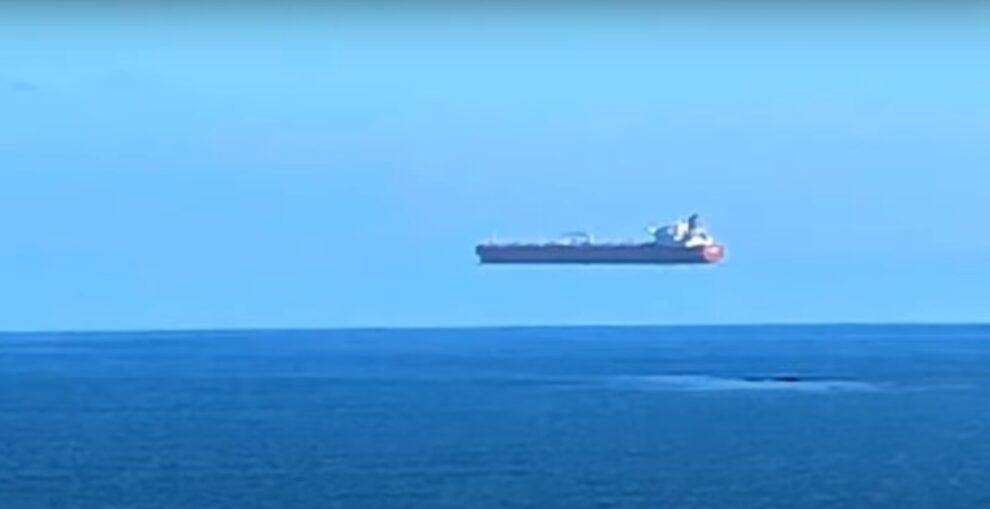David Morris was “stunned” to notice a giant ship hovering in mid-air above the water as he looked out to sea from a hamlet near Falmouth in Cornwall, CornwallLive reported.
He recently captured an astonishing scene off the coast as he looked out to sea from Gillan, not far from Helston, that left him puzzled.
Hovering ship above the sea
David Braine, BBC News meteorologist explained that what David Morris had recorded with his camera lens wasn’t levitation. It was a “superior mirage.” This forms by conditions more predictable in the frozen arctic than off the English coast. Such illusions can also occur in UK winters but they are very rare.
“Superior mirages occur because of the weather condition known as a temperature inversion, where cold air lies close to the sea with warmer air above it,” Braine said. “Since cold air is denser than warm air, it bends light towards the eyes of someone standing on the ground or on the coast, changing how a distant object appears.”
He added, “Superior mirages can produce a few different types of images. Here a distant ship appears to float high above its actual position, but sometimes an object below the horizon can become visible.”
The distinct pictures captured by Morris are some of the most precise examples of a superior mirage to date.
Some readers of CornwallLive suggested it could be a photo-shopped image, or skeptically commented “Whatever floats your boat”.
People on Twitter wondered at the mind-boggling shot of the hovering ship above the sea and shared their thoughts.
Temperature Inversion
The illusion is caused by a meteorological experience, temperature inversion. Generally, the air temperature lowers with increasing altitude, making mountaintops more freezing than the foothills. But in a temperature inversion, warm air stays on top of a band of colder air, disturbing our visual perception. The inversion in Cornwall resulted from chilly air lying over the relatively cold sea with warmer air above.
Since cold air has a higher density than warm air, it has a higher refractive index. In the “hovering ship” situation, light rays coming from the ship bend downwards as it goes through the colder air, to viewers on the shore. This causes the ship to look in a higher position than it actually is – in this example, above sea level.
Photographers worldwide have captured incredible photos of ships and other vessels hovering in mid-air above the sea. This is possibly superior mirages.
More close optical illusions are the “inferior mirages” that rise apparent oases in the desert and puddles on hot summers. These mirages occur when cooler air lays down on a layer of hot air, directly above a road, for instance. When sunlight from the sky reaches the air near the hot surface, it bends back upwards to the viewer’s eye. This makes the sky’s reflection on the road.
